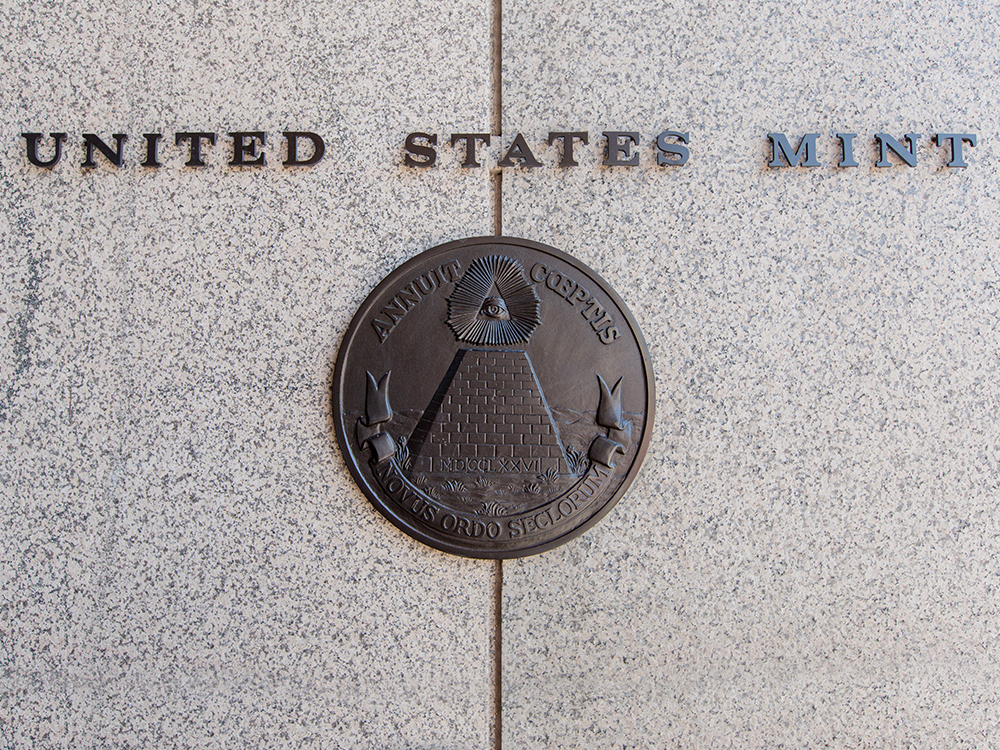One of the first acts of a sovereign nation is to provide circulating coin for commerce, and on April 2, 1792, Congress passed the Coinage Act, which established the first official mint in the United States in Philadelphia, then our nation’s capitol. In addition to laying out the denominations, the act also provided for the construction of a facility for the minting of coins, and the mint was the first Federal building to be erected under the Constitution. It was a modest structure, located at 7th and Arch streets and consisted really of three separate buildings as seen above.
Up until this time, the coins circulating in the States were a hodge-podge of colonial era-coppers and a good deal of Spanish gold and silver, largely minted in Mexico, Central and South America. Much of this foreign money continued to circulate until 1857, when the legal tender status of such money was revoked.
In March of 1793, the mint delivered the first circulating coins – approximately 11,000 copper cents with the Chain design on the reverse. Later that year, some 35,000 half cents and roughly 100,000 additional cents were made, mostly of a revised design which replaced the chain on the reverse with a wreath. The following year (1794) coinage of silver began with half dimes, half dollars and a few dollars, and the year after that, the first gold half eagles and eagles emerged. The early days at the mint were difficult, with regular outbreaks of yellow fever interrupting operations at several points in the late 18th and early 19th centuries, and there was even talk of abolishing the mint due to the numerous problems encountered.
By the late 1820s, the mint had outgrown its first building, and on July 4, 1829 the cornerstone was laid for a new structure at the corner of Juniper and Chestnut Streets in Philadelphia. Four years later, the mint moved into the new facility. Steam presses were installed in 1836, improving both the production speed and the appearance of the coins.
The discovery of gold in the Southeastern United States in the 1830s along with the growing commercial needs of the nation prompted the establishment of three additional branch mints in the southern parts of the country – Dahlonega, Georgia; Charlotte, North Carolina; and New Orleans, Louisiana, bringing to a close Philadelphia’s reign as the only U.S. mint after 45 years. However, all copper and nickel coinage continued to be struck in Philadelphia for another 70 years, while the branch mints, which would eventually include San Francisco (1854), Carson City (1870) and Denver (1906), would assist with the striking of silver and gold coinage.
By the beginning of the 20th century, the Philadelphia mint was again in need of a larger, more modern facility, and the third mint opened in June, 1901 on Spring Garden Street. It was reported that: “No pains have been spared to provide this mint with the best machinery to be had, and…it will be…a model institution.”
Following the opening of the Denver Mint in 1906, the New Orleans mint was closed three years later, leaving three operational mints throughout most of the remainder of the 20th century – Philadelphia, Denver and San Francisco. As the “mother mint”, Philadelphia coins typically bore no mintmark until 1980, when the “P” mintmark was added to nickels, dimes, quarters, halves and dollars. (An exception to this rule was the large “P” mintmark that appeared on the reverse of the “war nickels” struck from 1942 to 1945). To mark the 225th anniversary of U.S. coinage, a “P” mintmark appeared as well on the cents of 2017.
The list of rarities from the Philadelphia mint is long, with nearly all of the 18th century issues quite valuable today, particularly in high grade. The cents of 1793, 1799, 1804 are all key dates, the 1796 half cent, 1802 half dime, 1796 quarter, 1796-97 half dollar, 1794 dollar, 1796 quarter eagle, 1822 half eagle, small eagle reverse half eagles and eagles of 1795-97 and of course such legendary pieces as the 1804 dollar and 1913 Liberty nickel all came from the Philadelphia mint. This short list barely scratches the surface of the many treasures of U.S. numismatics struck there.
In 1969, the Philadelphia mint moved to its fourth (and current) location at 151 N. Independence Mall, (on 5th Street between Arch Street and Race Street). Now celebrating its 230th year of operation, the Philadelphia mint has reason to be proud of its long legacy of providing coinage for the United States virtually since its birth as a nation.














